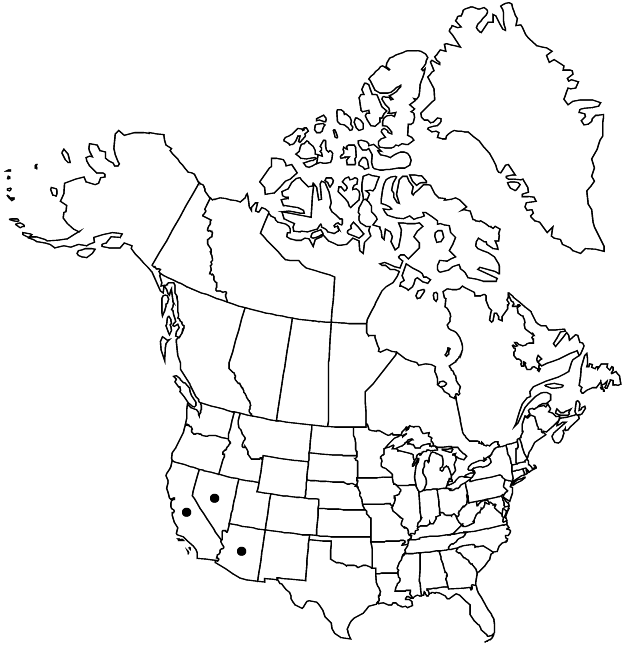Chorizanthe corrugata
Proc. Amer. Acad. Arts 8: 198. 1870.
Plants erect, 0.3–1.5 × 0.3–1 dm, thinly tomentose. Leaves basal or nearly so; petiole 0.5–2 (–3) cm; blade round-ovate, (0.5–) 0.8–1.5 (–2) × (0.3–) 0.5–1.5 (–2) cm, thinly floccose to tomentose. Inflorescences with involucres in small clusters 0.5–1 cm diam., green to tan or reddish; bracts 2, linear to linear-lanceolate, acicular, 2–7 cm × 1–2.5 mm, awns slightly curved, 0.5–1 mm. Involucres 1, green to tan, cylindric, 3-angled but 3-ribbed, 3–4 mm, markedly transverse corrugate, glabrate; teeth 3, equal, 2–4.5 mm; awns uncinate, 0.6–1 mm. Flowers 1, included to slightly exserted; perianth white, cylindric, 2–2.5 mm, thinly pubescent abaxially; tepals connate ca. 2/3 their length, monomorphic, oblong, acute, entire apically; stamens 6, slightly exserted; filaments distinct, 0.8–1 mm, glabrous; anthers cream, ovate, 0.4–0.5 mm. Achenes brown, lenticular, 2.5–3 mm. 2n = 38.
Phenology: Flowering Feb–May.
Habitat: Sandy to gravelly flats and slopes, mixed grassland, saltbush, creosote bush, and sagebrush communities
Elevation: -70-1000 m
Distribution

Ariz., Calif., Nev., Mexico (Baja California), Mexico (Sonora)
Discussion
Chorizanthe corrugata is found mainly in the Mojave and Sonoran deserts. The narrow, transversely corrugated involucral tube is diagnostic. Some anomalous flowers with four or eight stamens have been seen but this condition was always associated with other flowers bearing the normal number.
Selected References
None.
Lower Taxa
"longest" is not a number."/2" is not declared as a valid unit of measurement for this property."dm" is not declared as a valid unit of measurement for this property.